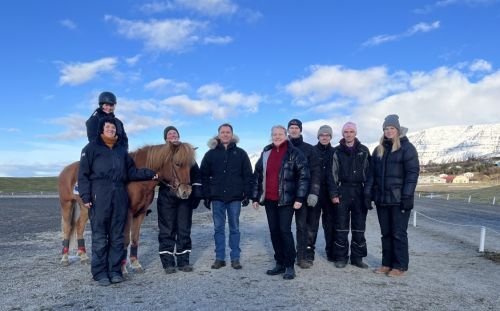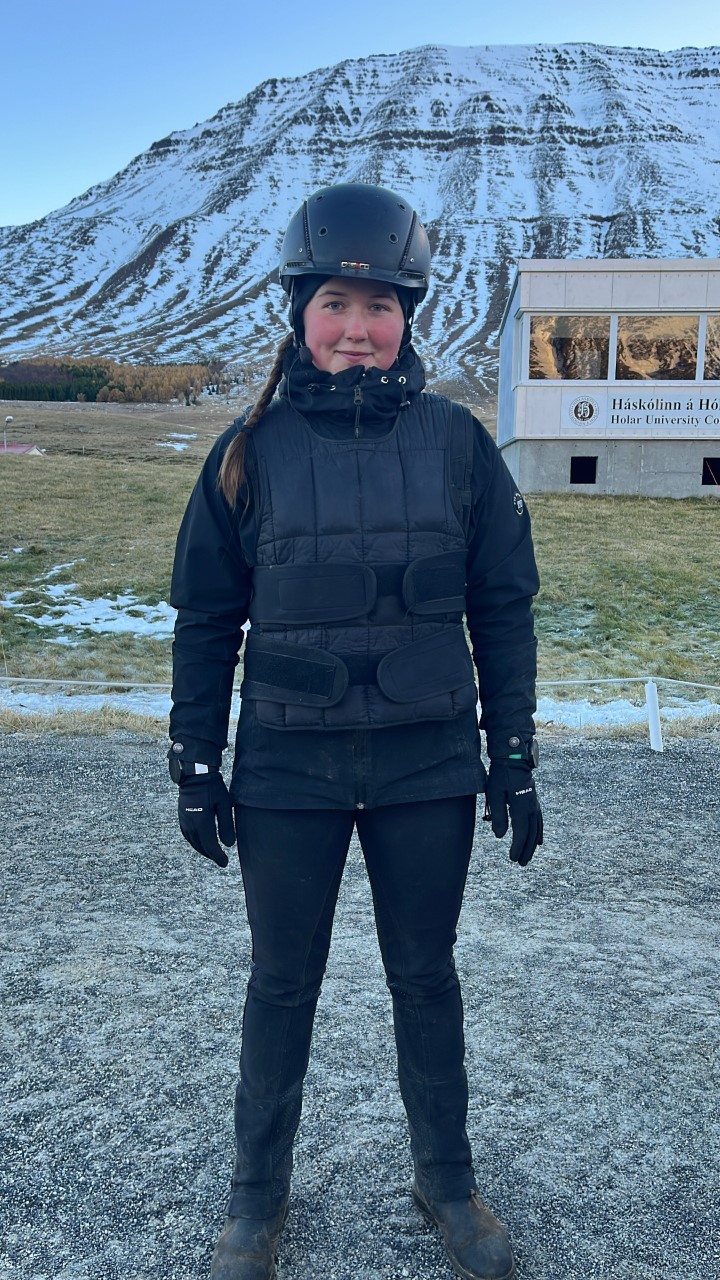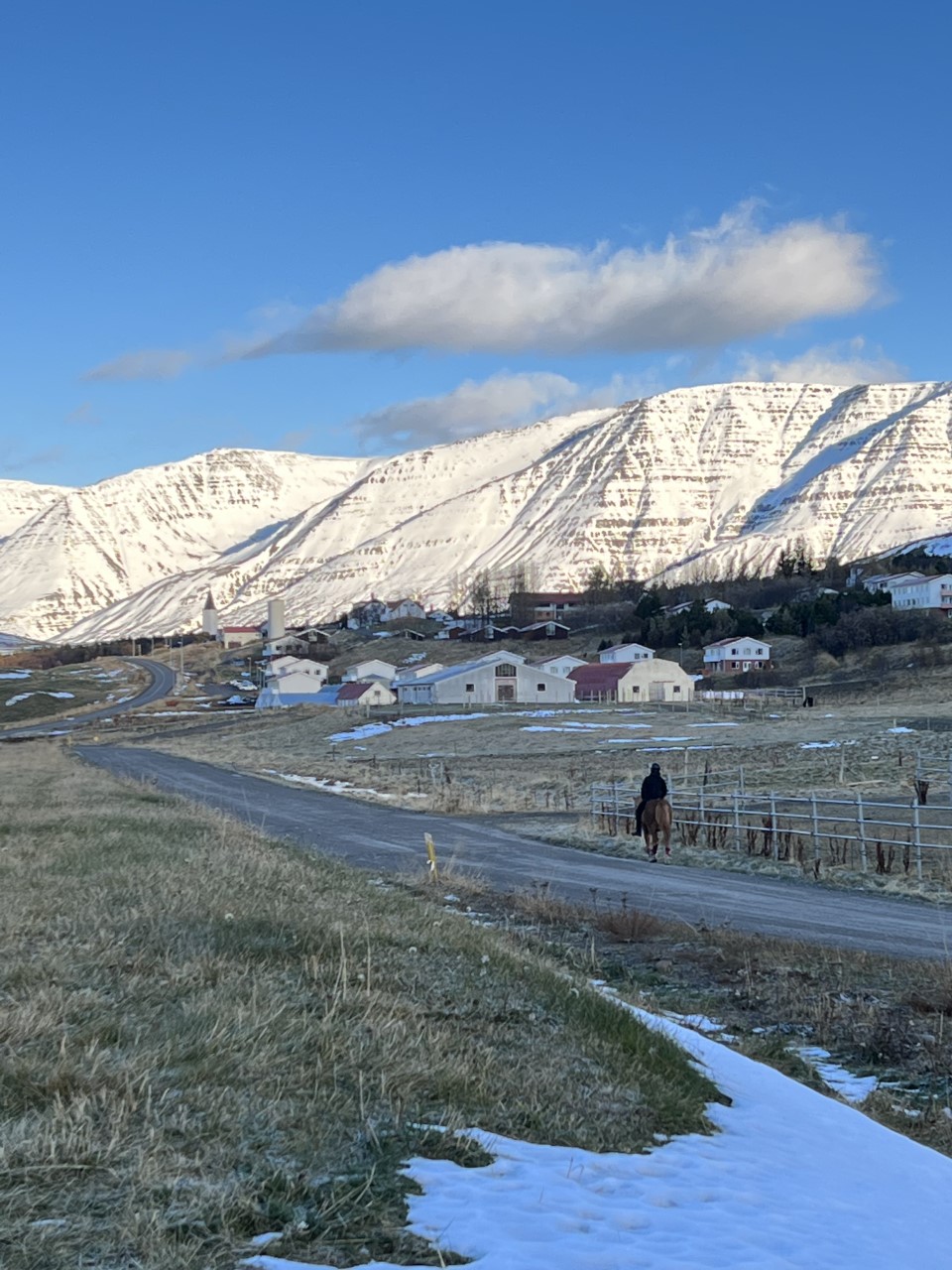Cart is empty
Riders’ body weight and effect on Icelandic horses’ physiological response

the horse Demantur frá Syðra-Skörðugili and his rider Ingunn Ingólfsdóttir,
Guðrún Margrét Sigurðardóttir, Sveinn Ragnarsson, Anna Jansson,
Víkingur Gunnarsson, Johannes Amplatz, Ágúst Gestur Daníelsson og Denise Söderroos.
Department of Equine Science at Holar and Swedish Agricultural University in Uppsala have a long and successful cooperation in research. PhD project of Denise Söderroos is one of the ongoing research and involves the weight bearing capacity of the Icelandic horse and effect of different weight of the riders on physiological response of the horse.
The days 10.-16. of October 2022 the PhD student and her main supervisor Anna Jansson came to Hólar, to measure the physiological response of several horses in treadmill tests and riding tests on the track. In the autumn 2021 some horses were measured in the same tests, but more horses were needed into the research.
The riding test on the track was done with one rider, which rode the horses in a medium speed in tölt (approx. 20 km/h) and the weight of the rider was increased with lead-weights (on the saddle and the rider). The riding test was incremental, where the weight was increased in each step of it, starting with the rider weight as 20% of the body weight of the horse, and then increased to 25%, 30% and ended with 35%. Between each step approximately 10 minutes lasted, for taking blood sample and adding more weight. Each horse was ridden approximately 600 m with each weight and always at the same speed. The physiological response was estimated f.ex. by recording heart rate the whole riding test and measuring lactic acid after each step.
The horses had to pass a veterinary check before the tests (treadmill and riding test) and the veterinary check was also repeated one day after finishing the tests.
The aims of our research were several, firstly to estimate if there is a difference in the physiological response between horses with a thin back versus broad back when carrying riders of different body weight. Secondly to develop a riding test which can tell us how quickly horses get tired when carrying a rider of different body weights. Thirdly, to see if the physiological response of horses when working in trot in an incremental treadmill test, correlate to the physiological responses of the same horses in an incremental riding test in tölt when carrying a rider.
Special thanks to the families at Syðra-Skörðugili and Bergland for lending horses into the research (2021 and 2022). We also thank Crossfit at Sauðárkrókur for lending us the weight vest for the rider. Finaly we thank all who worked in the research, not least the riders Konráð Valur Sveinsson (2021) og Ingunn Ingólfsdóttir (2022) and veterinarians Guðrún Margrét Sigurðardóttir og Höskuldur Jensson.
Author: Guðrún J. Stefánsdóttir, photos are from the author.


